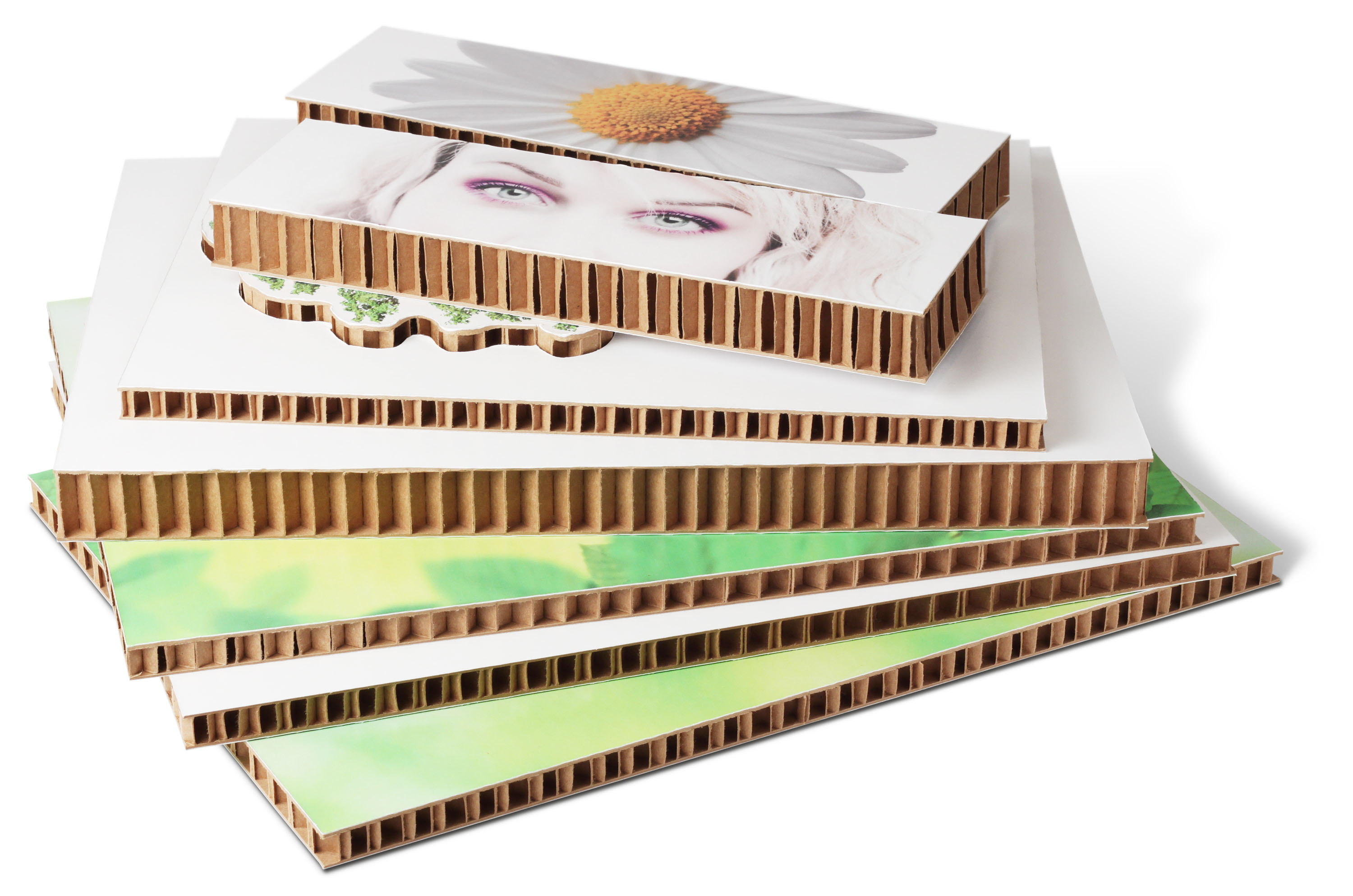General Comparison of Foamboard, Gatorboard and Falconboard Products
Let’s compare the features and benefits of foamboard, gatorboard, and falconboard.
Foamboard, gatorboard and falconboard are all budget-friendly and lightweight signage options that are similar in a lot of ways, yet distinct in others.
Let’s talk about them in a little more detail so you can see the construction and benefits of each material. Hopefully, this will give you an idea as to which board is the best option for your signage needs.
Facts About Foamboard
Just as it sounds, foamboard is a material made of rigid foam. The core of foam board signs is rigid but it has a bit of give. That said, it’s best not to bend it too much as it’s prone to creasing or snapping. More specifically, the core of the sign is foam sandwiched by white paper. Any printing on the surface is done in high-quality UV ink.
Foamboard weighs about a pound per 7 ½ square inches. The standard thickness is 3/16” but it can be made with a custom thickness if needed․ That means you can get a reasonably large sign without adding too much weight. However, keep in mind that the larger the sign, the more prone to damage from bending or snapping.
The light weight of these boards makes them versatile and safe for everything from businesses and school use to promotions for stores and social gatherings. Another pro is that the material is inexpensive.
On the downside, foamboard doesn’t handle weight particularly well. It is likely to dent or get other kinds of damage if weight is stored on top of it. The material is also not waterproof, and its light weight makes it vulnerable to moderate winds. As a result, it’s not recommended for outdoor use.

Facts About Gatorboard
The best way to think about gatorboard is that it’s like a higher-quality foamboard. Looking at a foamboard and gatorboard sign side-by-side, you might not notice a difference. That’s because the difference between the two isn’t in appearance but in construction quality.
Like foamboard, gatorboard is composed of a rigid polystyrene core at a standard 3/16” thickness. Like foamboard, the thickness can be altered upon request.
Gatorboard is notably more durable and solid in its construction than foamboard, yet maintains its printable surface and relative light weight. Foamboard is generally a temporary signage solution but gatorboard can be used for two years or more with proper care.
Although gatorboard is pretty tough, it’s not indestructible. It’s still a good idea to keep weight and moisture off of it. It is more resistant to both forces than foamboard, but too much of either will cause damage.
Since gatorboard is a more durable version of foamboard, it’s also a bit more expensive. Yet, it’s a much more affordable option compared to aluminum signs or acrylic photo prints, for instance.

Facts About Falconboard
While falconboard is also lightweight and versatile, it’s unlike the other two materials since it’s not made of a polystyrene foam. Instead, it’s made of thick paper in a honeycomb pattern. This design makes it far more resistant to bending and snapping than either foamboard or gatorboard.
Falconboard is ½” thick and is frequently cut into custom shapes in order to give it an impressive three-dimensional effect. It can be printed on both sides and uses the same high-quality UV ink that is resistant to scratching and fading.
Falconboard is a great low-cost option if you’re looking for something with a little more character than standard foamboard. It’s printable and looks great when contour cut (foamboard and gatorboard cannot be contour cut, they can only have halo-style cuts). It’s only slightly heavier than foamboard but it’s much more rigid and durable.
While a popular option is to get falconboard signs with drilled holes for hanging, the unique three-dimensional nature of falconboard allows it to also be effective as a free-standing sign.
A downside is that falconboard is highly susceptible to water damage because of its paper core construction. It’s not meant for long-term use outdoors. Even indoors, falconboard is generally best for temporary displays, as it’s light and prone to damage. If you're looking for a more resilient option, metal signs are perfect for indoor and outdoor applications.

